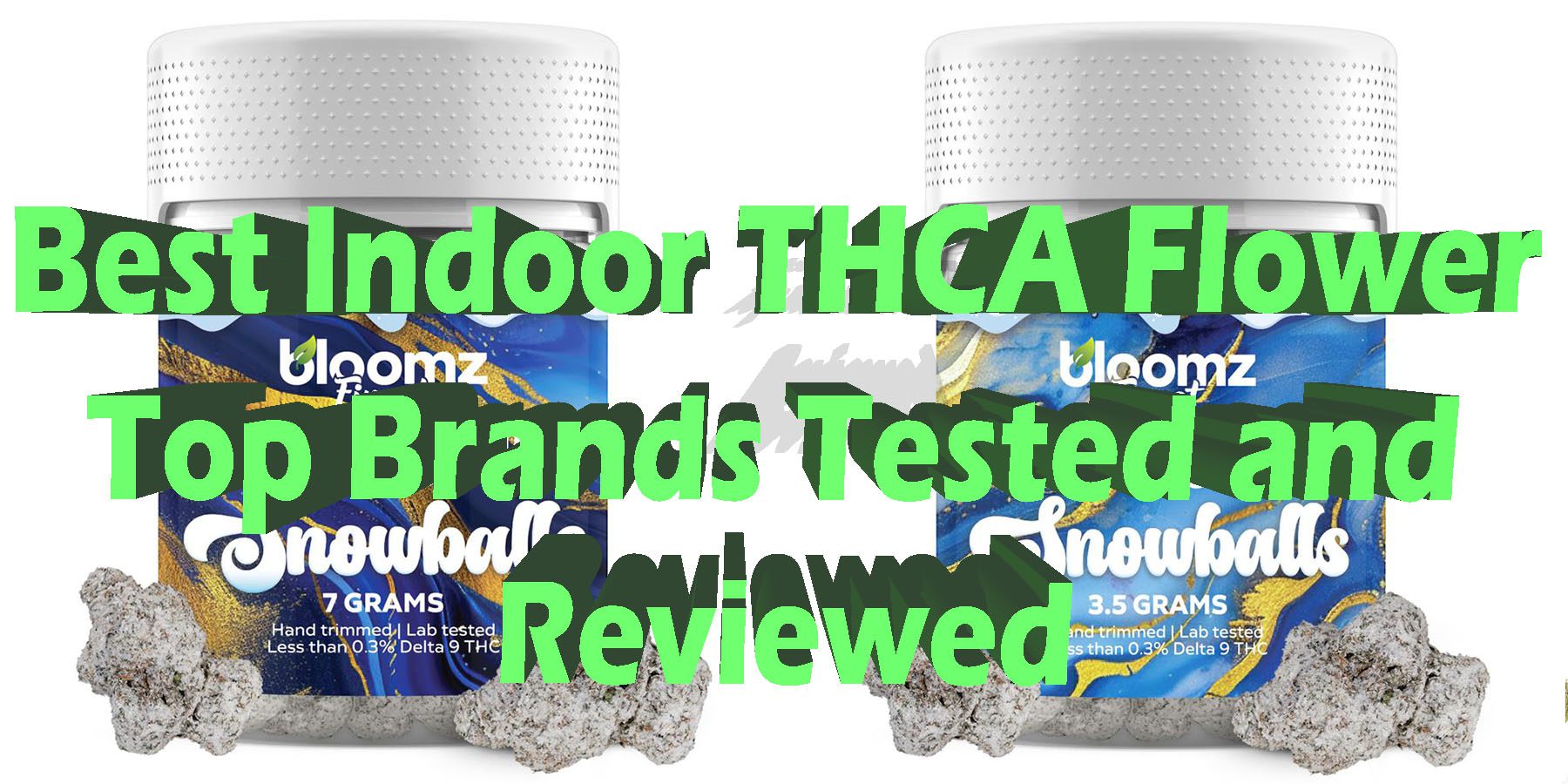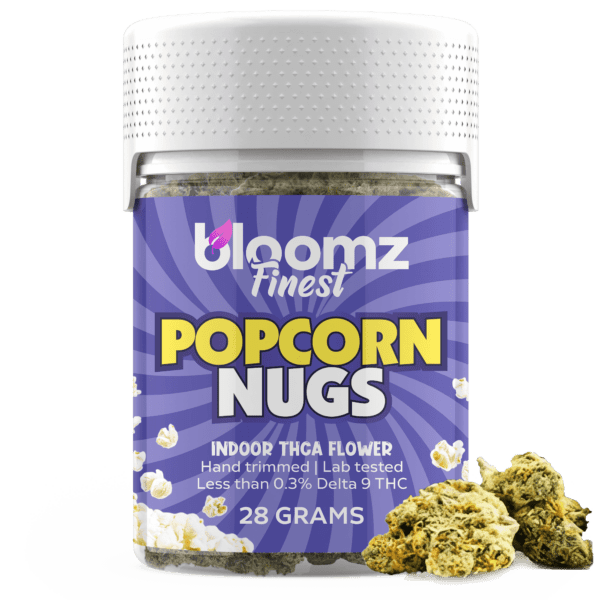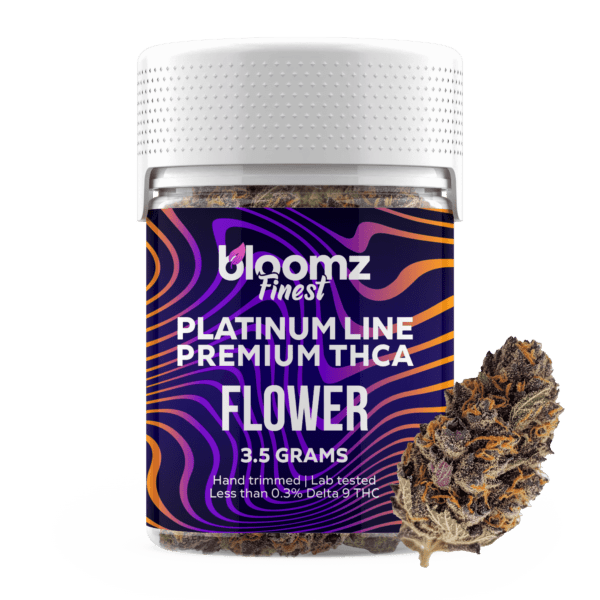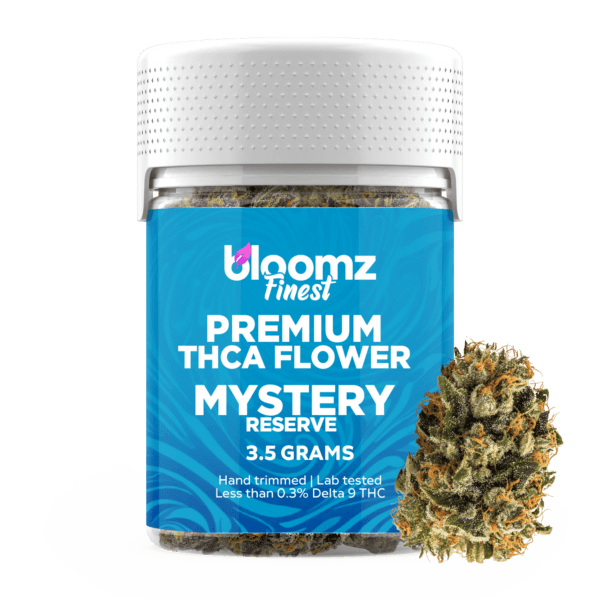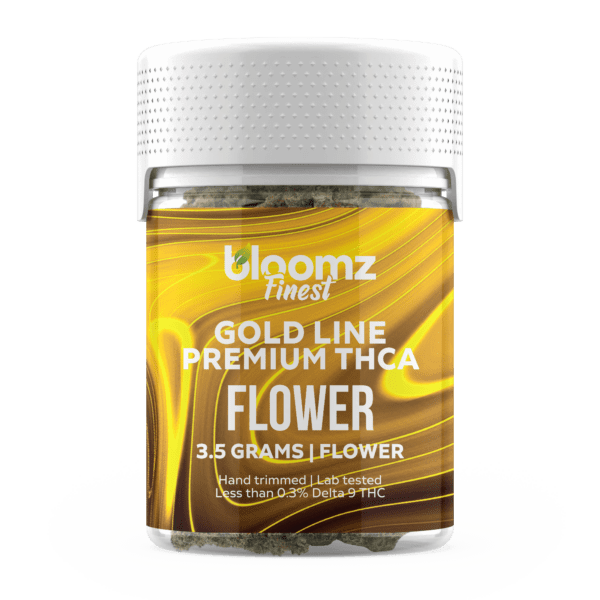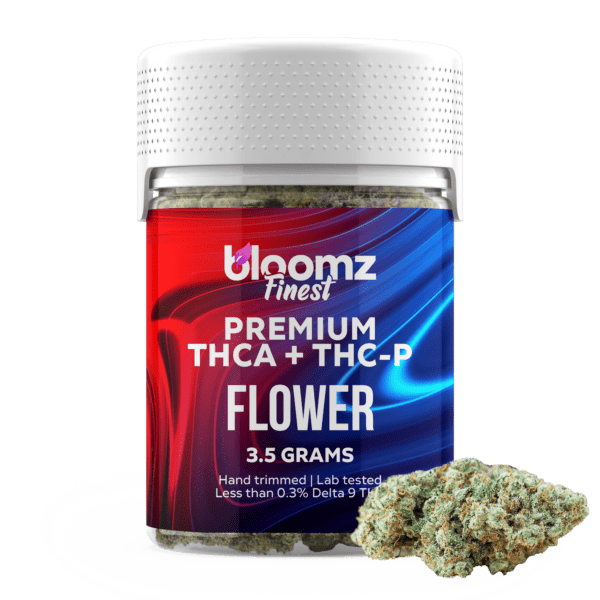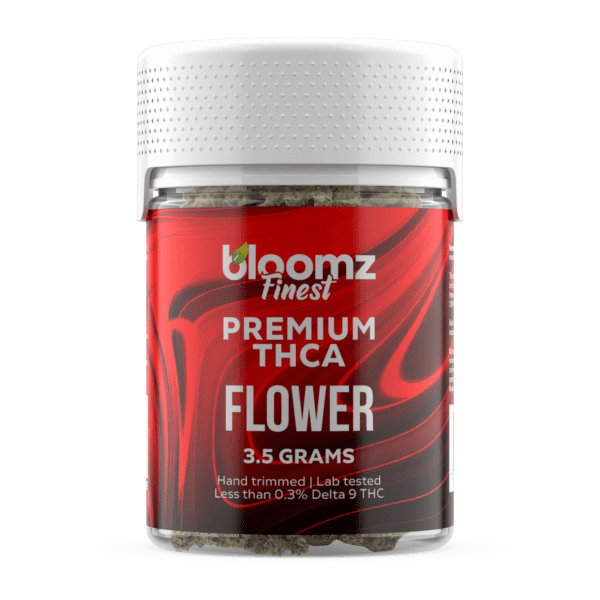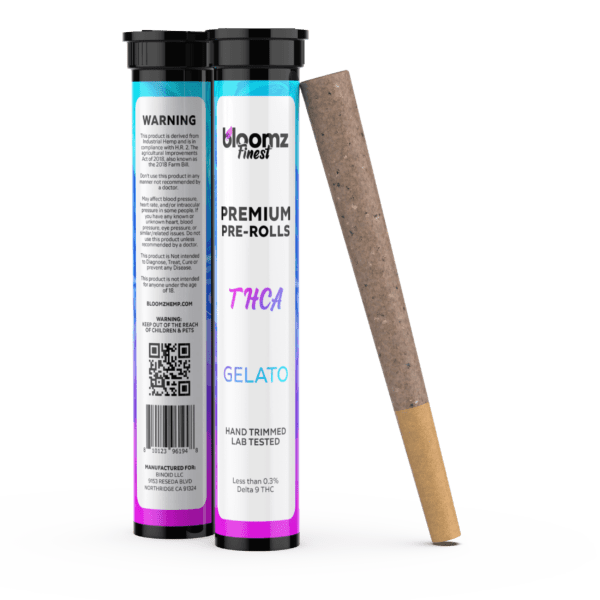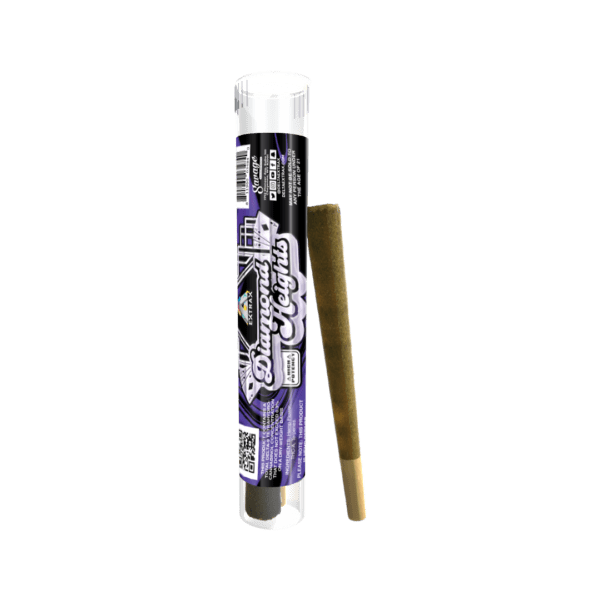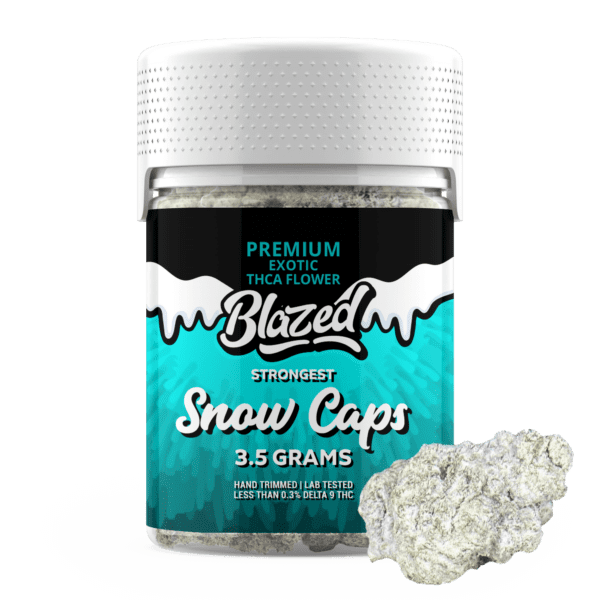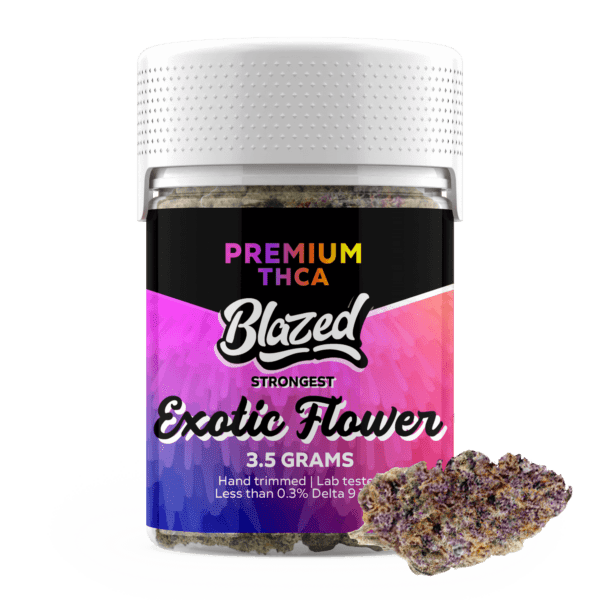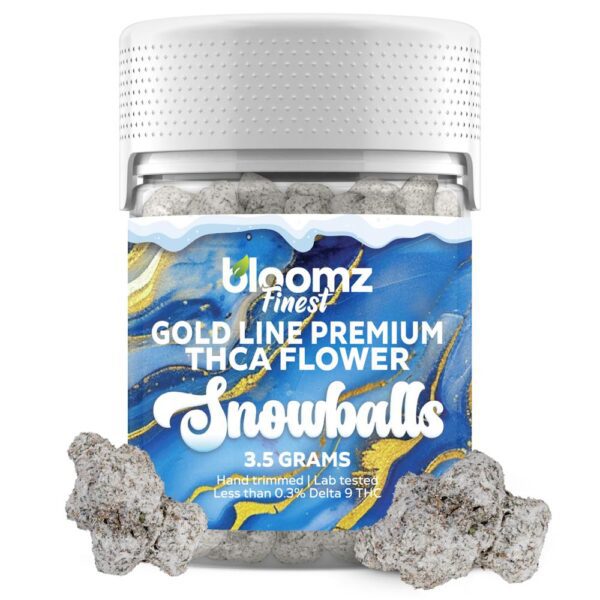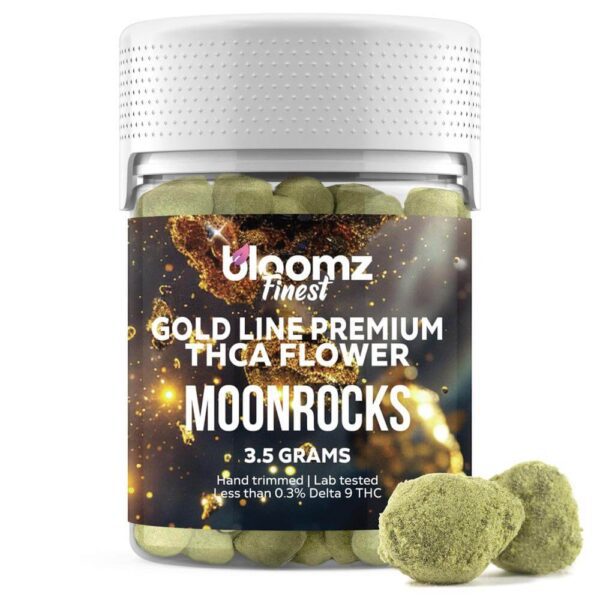In the bustling 2025 THCA market, ‘Indoor Grown’ is more than just a label; it’s often perceived as a promise of precision, consistency, and enhanced quality. Growing indoors allows cultivators unparalleled control over light, temperature, humidity, and nutrients – factors that can significantly influence a plant’s final expression.
But which brands are truly harnessing the power of controlled environments to produce consistently exceptional flower, maximizing genetic potential and achieving peak cannabinoid and terpene profiles? It takes significant expertise and investment to translate indoor potential into top-tier results year-round. Our goal here is to spotlight the producers who master this craft, the brands whose Indoor THCA flower consistently stands out from the crowd for all the right reasons.
TO BUY THCA FLOWER CLICK HERE
Recommended products
-
THCA Smalls
$149.99$256.99 -
THCA Flower – Platinum Line
$49.99$79.99 -
THCA Flower – Mystery Reserve
$41.99$79.99 -
THCA Flower – Indoor Exotics – Gold Line
$37.99$69.99
THCA 101
Tetrahydrocannabinolic acid (THCA) is a non-psychoactive cannabinoid found in raw and live cannabis plants. It’s the acidic precursor to tetrahydrocannabinol (THC), the well-known psychoactive compound in cannabis. In its natural state within the plant, THCA does not produce the “high” associated with cannabis use because its molecular structure prevents it from effectively binding to the CB1 receptors in the brain. Biosynthetically, THCA is produced from cannabigerolic acid (CBGA) by the enzyme THCA synthase within the cannabis trichomes.
However, when THCA is exposed to heat through processes like smoking, vaping, or baking/cooking, it undergoes a chemical reaction called “decarboxylation”, losing a carboxyl group and converting into THC. This transformation activates the psychoactive properties, allowing THC to interact with the brain’s cannabinoid receptors and produce various effects based on scientific and anecdotal evidence such as euphoria, altered perception, and blissfulness.
Crafting THCA-based products in general requires a meticulous approach, starting with the careful selection of premium cannabis strains. Let’s break it down though, shall we:
Harvesting: The initial step involves the careful harvesting of mature cannabis plants at their optimal stage. This stage is critical because it determines the highest concentration of THCA present within the plant material. Skilled cultivators monitor the trichomes, the resin glands where cannabinoids are produced, to pinpoint the precise moment of peak maturity. Harvesting too early or too late can significantly impact both the quality and potency of the final product. The plants are typically hand-harvested to minimize damage and preserve the delicate trichomes. This process requires a keen eye and extensive knowledge of the specific strain’s growth cycle.
Freezing: Immediately following harvest, the cannabis plants are flash-frozen to preserve the delicate THCA molecules. Rapid freezing prevents the degradation of THCA into Delta-9 THC, which is crucial for maintaining the desired chemical profile. This step is essential for preserving the integrity and potency of the final product. The frozen plants are then stored in specialized freezers at extremely low temperatures to maintain their quality. This immediate freezing process ensures that the THCA remains stable and does not convert prematurely.
Extraction: The next step involves extracting the THCA from the frozen plant material using advanced techniques. This extraction process typically employs methods like CO2 extraction, which uses pressurized carbon dioxide to separate the THCA. Solventless extraction methods, such as rosin pressing or ice water extraction, are also used to avoid residual solvents. These methods are carefully controlled to ensure the highest purity and yield of THCA. The extraction process is critical for isolating the desired cannabinoid from the plant’s other compounds.
Crystallization: Following extraction, the THCA is often crystallized to achieve a high purity level. This process involves dissolving the extracted THCA in a solvent and then gradually removing the solvent to form crystals. Crystallization is a critical step in refining the THCA, as it helps to remove any remaining impurities. The resulting THCA crystals are highly pure and potent. This step ensures a consistent and high-quality product.
Purification: After crystallization, the THCA may undergo further purification to remove any residual impurities or solvents. This step is crucial for ensuring the safety and quality of the final product. Techniques such as chromatography or distillation may be used to further refine the THCA. Rigorous testing is conducted to verify the purity and potency of the purified THCA. This ensures that the product meets the highest standards of quality and safety.
Packaging: The final step involves carefully packaging the refined THCA extract to maintain its potency and freshness. Specialized containers and packaging materials are used to protect the THCA from light, air, and moisture. Proper packaging is essential for preserving the quality and shelf life of the product. The packaged THCA is then stored and distributed under controlled conditions to ensure that it reaches consumers in optimal condition. This meticulous packaging process ensures that the consumer receives a high quality and safe product.
Getting Familiar with THCA Flower: From Seed to Sale
The journey from a mature cannabis plant containing THCA to a packaged THCA flower product is a delicate process focused on preservation and quality. Here’s a detailed breakdown of how THCA flower is made after the cannabis plant has grown and the THCA has been created within it:
Phase 1: Harvesting at the Apex of THCA Content
Precise Timing is Key: Growers don’t just harvest based on a calendar date. They meticulously observe the trichomes, those tiny, crystalline glands on the buds and sugar leaves. These are the powerhouses of cannabinoids and terpenes.
Visual Inspection with Magnification: Using jeweler’s loupes or digital microscopes, growers examine the color and shape of the trichome heads.
Clear Trichomes: Indicate the plant is still developing, and THCA levels may not be at their peak.
Cloudy/Milky White Trichomes: This is generally considered the optimal window for harvesting THCA-rich flower. The THCA content is typically at its highest, and the terpene profile is well-developed.
Amber Trichomes: Signal the beginning of THCA degradation into THC. While some growers prefer a mix for specific effects, the goal for THCA flower is often to harvest before significant ambering.
Understanding Cannabinoid Synthesis: Growers understand the plant’s internal processes. Environmental factors like light cycles and nutrient availability influence cannabinoid production. Harvesting at the right stage ensures the plant has dedicated its energy to producing THCA rather than converting it.
Gentle Handling: To protect the fragile trichomes, harvesting is often done with care.
Hand-Cutting: Individual branches or the entire plant may be cut by hand. This allows for selective harvesting if different parts of the plant mature at varying rates.
Avoiding Trichome Damage: Rough handling can cause trichomes to break off, leading to a loss of valuable THCA and terpenes.
Phase 2: The Critical Drying Stage
The primary goal of drying is to reduce moisture content to a level that prevents mold and mildew growth while preserving the chemical profile of the flower.
Controlled Environment is Paramount: Drying is not a passive process. It requires a carefully managed environment.
Darkness: Light, especially UV light, can degrade cannabinoids and terpenes. Drying rooms are kept dark or dimly lit.
Temperature Regulation: Ideal temperatures typically range from 60-70°F (15-21°C). Higher temperatures can cause terpenes to evaporate and may speed up THC conversion.
Humidity Control (45-55% RH): This range allows for a slow and even drying process. Too high humidity can lead to mold; too low can cause the flower to dry too quickly, potentially trapping chlorophyll and resulting in a harsh taste. Dehumidifiers or humidifiers are used to maintain this balance.
Air Circulation: Gentle airflow is essential to prevent stagnant air and promote even drying. Small fans are often used, directed away from the buds to avoid excessive drying of the outer layers.
The Drying Process – Step-by-Step:
Hanging or Rack Drying: Harvested branches are often hung upside down or placed on mesh racks in the drying room. This allows for air to circulate around all sides of the buds.
Monitoring Moisture Loss: Growers regularly monitor the moisture content of the buds. This can be done using moisture meters or by feel.
The “Snap Test”: A common indicator of proper drying is when small stems snap cleanly when bent, rather than bending limply. This usually takes anywhere from several days to two weeks, depending on environmental conditions and bud density.
Avoiding Over-Drying: Overly dry flower becomes brittle, loses terpenes, and can be harsh.
Phase 3: The Art of Curing for Enhanced Quality
Curing is a slow aging process that significantly improves the aroma, flavor, and overall quality of the THCA flower.
Airtight Containers: Once the buds are sufficiently dried, they are carefully placed into airtight containers.
Glass Jars: Mason jars are a popular choice due to their inert nature and airtight seals.
Food-Grade Plastic Containers: Some growers use these, but it’s crucial to ensure they don’t leach chemicals or retain odors.
Filling Levels: Jars are typically filled loosely, leaving some headspace for air exchange.
Controlled Curing Environment: Similar to drying, the curing environment is crucial.
Cool and Dark: To continue preventing degradation.
Consistent Temperature: Avoiding significant temperature swings is important.
The Curing Process – Step-by-Step:
Initial “Burping”: For the first week or two, the jars are opened (burped) once or twice a day for a short period (15-30 minutes). This allows excess moisture trapped inside the buds to escape and fresh oxygen to enter. The smell during burping can also indicate if the curing process is going well or if there are issues like mold.
Humidity Monitoring: Small hygrometers are often placed inside the jars to monitor the relative humidity. The ideal range during curing is typically 55-65%. If the humidity is too high, burping frequency may need to increase. If it’s too low, humidity packs designed for cannabis can be used.
Extended Curing: The curing process can last anywhere from two weeks to several months, depending on the desired level of refinement. Longer curing times can further break down chlorophyll and allow the terpene profiles to fully develop and meld.
Monitoring for Issues: Throughout the curing process, growers regularly inspect the buds for any signs of mold or mildew. Any affected buds are immediately removed to prevent contamination of the entire batch.
Phase 4: Trimming for Aesthetics and Concentration (Often Performed After Drying or Curing)
Removing Unwanted Material: Trimming involves removing the larger fan leaves and smaller sugar leaves that extend from the buds. These leaves contain fewer trichomes and can be less desirable for consumption.
Two Main Methods:
Wet Trimming: Done immediately after harvesting, before drying. This can speed up the drying process but may also lead to a loss of some trichomes.
Dry Trimming: Done after the buds have been dried. This is often preferred as it is believed to better preserve trichomes. However, it can be more time-consuming.
Hand Trimming vs. Machine Trimming:
Hand Trimming: Considered the premium method. It allows for greater precision and gentler handling of the buds, minimizing trichome damage. Skilled trimmers carefully remove leaves while preserving the shape and structure of the THCA flower.
Machine Trimming: Used for larger-scale operations to increase efficiency. While faster, it can be less precise and may result in some trichome loss.
Phase 5: Quality Assurance and Testing
Ensuring Potency and Safety: Reputable producers subject their THCA flower to rigorous testing by third-party laboratories.
Key Tests Conducted:
Cannabinoid Profile Analysis: This determines the exact percentages of THCA, THC, CBD, and other cannabinoids present in the flower. Consumers rely on these results to understand the potency of the product.
Terpene Profile Analysis: Identifies and quantifies the various terpenes present, providing insights into the aroma, flavor, and potential effects of the flower.
Contaminant Testing: Crucial for consumer safety. This includes testing for:
Pesticide Residues: To ensure the THCA flower was grown without harmful chemicals.
Heavy Metals: To check for absorption of toxic elements from the soil or growing environment.
Microbial Contaminants: To detect the presence of mold, mildew, and harmful bacteria.
Residual Solvents: If any extraction processes were involved (though less common for flower), this tests for leftover solvents.
Certificate of Analysis (COA): The results of these tests are typically compiled into a COA, which reputable producers make readily available to consumers. This transparency builds trust and allows consumer to make informed decisions.
Phase 6: Careful Packaging and Storage for Distribution
Protecting the Finished Product: Proper packaging is essential to maintain the quality and potency of the THCA flower during transportation and storage.
Packaging Requirements:
Airtight and Smell-Proof: To prevent terpene loss and maintain freshness.
UV Protection: To prevent cannabinoid degradation from light exposure. Dark or opaque packaging is often used.
Child-Resistant: In many regulated markets, packaging must be child-resistant.
Informative Labeling: Clearly indicating the product name, cannabinoid content (especially THCA percentage), net weight, producer information, and often a QR code linking to the COA.
Storage Recommendations: Even after packaging, proper storage is important. Cool, dark environments are ideal to maximize shelf life and prevent degradation.
By following these detailed steps, cultivators and producers aim to create high-quality THCA flower that retains its potency, aroma, flavor, and overall appeal for consumers. Plus, abides by the 2018 Farm Bill. The emphasis throughout the process is on careful monitoring, environmental control, and gentle handling to preserve the delicate trichomes and the valuable compounds they contain.
What Exactly is Indoor THCA Flower Then?
“Indoor THCA flower” refers to cannabis that has been cultivated in a controlled indoor environment, as opposed to being grown outdoors or in a greenhouse. This method allows growers to precisely manage crucial factors like temperature, humidity, lighting, nutrient delivery, and airflow throughout the plant’s life cycle. Such meticulous control often results in higher quality flower with denser buds, enhanced trichome production, and more consistent cannabinoid and terpene profiles. Indoor growing can also minimize the risk of pests, diseases, and environmental stressors, leading to a cleaner and more visually appealing final product. Consequently, indoor THCA flower is often associated with premium quality and a higher price point due to the resources and expertise involved in its cultivation. The controlled environment allows for optimization of THCA content and the development of specific desired characteristics in the flower.
How We Came Up with a List of Top Indoor THCA Flower Brands
Selecting the “Top Indoor THCA Flower Brands” in today’s hemp marketplace was no easy task. With lots of brands competing for attention, particularly those highlighting their cultivation methods, we carefully assessed some crucial factors to make this list happen. Basically, the intent was to highlight brands that continuously deliver in numerous facets, specifically leveraging the advantages of indoor cultivation as it pertains to the following:
Making Sure the Indoor THCA Flower is High in Quality and Purity: Indoor cultivation offers the distinct advantage of meticulous environmental control, theoretically minimizing exposure to outdoor pests, pollutants, and contaminants while allowing growers to optimize conditions for plant health and resin production. We prioritized brands that demonstrably leverage this control, showcasing THCA flower with exceptional structure, density, and trichome coverage, verified by clean third-party lab tests confirming potency and purity. Evidence of careful climate management, precise nutrient delivery, and clean growing practices are key indicators of high-quality indoor operations translating potential into superior flower.
Indoor THCA Flower Variety (Different Types, Sizes, Diamond-Infused, Live Resin-Infused, Packaging, etc.): The controlled nature of indoor growing allows cultivators to successfully cultivate a diverse range of strains year-round, including potentially sensitive or demanding genetics that might struggle outdoors. Top indoor brands capitalize on this by offering a varied menu of cultivars, spanning different lineages and profiles, consistently. Variety also extends to product formats, such as offering multiple sizes (grams to ounces), or innovative options like indoor flower infused with THCA diamonds or live resin. Quality packaging that preserves the optimized freshness and terpene profile of indoor buds is also essential.
Indoor THCA Flower Possibly Combined with Other Cannabinoids (Non-Intoxicating, Mild Potency, Moderate Potency, or Strong Potency types): Starting with high-quality indoor THCA flower as a base, some brands create enhanced products by incorporating other hemp-derived cannabinoids or concentrates. This could involve adding non-intoxicating cannabinoids for tailored effects or significantly boosting potency by infusing the indoor buds with THCA isolate or flavorful concentrates like live resin. We considered whether brands offered these amplified options alongside their standard indoor flower, providing choices that range from potent baseline experiences to exceptionally strong formulations for those seeking maximum intensity. Such offerings demonstrate advanced product capabilities built upon a quality indoor foundation.
Terpenes and Strains (Indica/Sativa/Hybrid) Infused into the Indoor THCA Flower: Controlled indoor environments can be fine-tuned to optimize terpene expression, potentially leading to more pungent aromas and distinct flavors compared to outdoor counterparts facing environmental variables. Leading indoor brands often excel in producing flower with vibrant and well-preserved terpene profiles, providing detailed information about the dominant terpenes and strain classification (Indica/Sativa/Hybrid). We looked for brands whose indoor THCA flower consistently delivered pronounced and appealing aromas, suggesting cultivation and curing processes specifically designed to maximize and protect these volatile compounds.
Customer Reviews: Direct feedback from consumers provides crucial insights into the consistency and quality delivered by an indoor THCA flower brand. We analyzed reviews focusing on aspects often associated with good indoor cultivation: visual appeal (density, trichome coverage, color), aroma intensity and profile, freshness, smoothness, and the reliability of effects. Consistent praise regarding these elements suggests a brand is successfully leveraging indoor techniques to produce superior flower batch after batch. Reports of inconsistency, lack of density, or muted aromas could indicate shortcomings in their indoor process control.
Brand Reputation: A brand’s reputation speaks volumes about its commitment to quality, particularly when claiming the advantages of indoor cultivation, which implies higher standards and potentially higher costs. We assessed brands based on their standing in the market, transparency regarding their growing practices (even if not detailing exact proprietary methods), lab testing accessibility, customer service responsiveness, and overall professionalism. Brands known for investing in state-of-the-art indoor facilities, employing experienced growers, and consistently delivering premium indoor THCA flower products build strong reputations based on tangible results and reliability.
Recommended products
Top Indoor THCA Flower Brands
Applying these criteria focused on the nuances of indoor cultivation, we identified the following brands as leaders in delivering high-quality Indoor THCA flower in 2025. These companies showcase the potential of controlled environment agriculture in the hemp space, consistently providing impressive results.
Indoor THCA Flower Brand #5: Earth Flower Wellness
Earth Flower Wellness presents itself as a brand deeply rooted in providing natural, plant-based products, with a focus on quality and consumer well-being. Their approach often emphasizes a connection to nature, even while potentially utilizing controlled indoor environments for some products to ensure consistency and purity. They strive to build trust through transparency, often providing details about their sourcing or cultivation philosophies and making lab results accessible. While offering a potential range of wellness products, their curated selection of THCA flower indicates a commitment to meeting demand for high-quality, potent hemp options derived from careful cultivation practices aimed at maximizing desirable plant characteristics.
Their THCA flower collection, often featuring indoor-grown varieties, focuses on providing popular and effective strains known for their pleasant aromas and reliable effects. Earth Flower Wellness selects cultivars that perform well under controlled conditions, resulting in buds with good structure, appealing terpene profiles, and consistent cannabinoid potency. While perhaps not exclusively focused on boundary-pushing exotic genetics, the emphasis on clean cultivation and quality control within their indoor operations ensures a dependable product. They cater to consumers seeking trustworthy, well-grown THCA flower that benefits from the consistency and purity achievable through mindful indoor farming techniques.
Indoor THCA Flower Brand #4: Oregon Hemp Flower
Oregon Hemp Flower leverages the state’s strong reputation for cannabis and hemp cultivation, positioning itself as a provider of high-quality, regionally sourced products. Their name itself evokes images of lush fields, but they clearly delineate their specific Indoor THCA Flower collection, signaling a commitment to this premium cultivation method. They often emphasize freshness and direct sourcing, potentially highlighting relationships with experienced Oregon growers who utilize controlled environments. The brand aims to deliver the quality associated with the Oregon cannabis legacy, translated into the hemp-derived THCA market through meticulous indoor growing and processing standards for discerning consumers nationwide.
The Indoor THCA Flower collection from Oregon Hemp Flower showcases cultivars specifically chosen for their ability to thrive and express their full potential under controlled conditions. Expect to find strains with robust structures, dense buds, and visually appealing trichome coverage, indicative of optimized indoor environments. They typically offer a mix of popular and perhaps some unique strains, focusing on delivering potent cannabinoid levels and distinct, well-preserved terpene profiles characteristic of carefully managed indoor grows. By dedicating a specific category to indoor flower, Oregon Hemp Flower assures customers they are purchasing products cultivated with the precision and attention to detail expected from top-tier controlled environment agriculture.
Indoor THCA Flower Brand #3: Bay Smokes
Bay Smokes maintains its presence as a versatile and popular source for various hemp-derived cannabinoids, recognized for its wide selection and focus on the experiential aspects of consumption. They cater effectively to diverse preferences, offering products aimed at achieving different moods or sensations, from energizing to deeply relaxing. Their THCA flower lineup is extensive, and they make a point to categorize or label specific offerings as ‘Indoor,’ acknowledging the market’s demand for flower grown under controlled conditions. This distinction within their broader catalog allows customers specifically seeking the perceived benefits of indoor cultivation to easily identify relevant options.
When selecting from Bay Smokes’ Indoor THCA flower range (often identifiable via site navigation or product tags), consumers can anticipate strains cultivated with the goal of achieving higher potency, better visual appeal, and potentially more controlled terpene expression compared to outdoor alternatives. Bay Smokes utilizes its sourcing network to acquire various indoor-grown cultivars, offering variety in terms of genetics (Indica, Sativa, Hybrid) and profiles within this category. While also offering other tiers, their dedicated indoor selections aim to meet the expectations associated with this growing method – consistency, cleanliness, and optimized cannabinoid/terpene production – providing reliable options for fans of indoor quality.
Indoor THCA Flower Brand #2: MINTZ™
MINTZ™ enters the scene with a brand identity that suggests premium quality, possibly drawing lineage or inspiration from established cannabis culture icons like the renowned ‘Minntz’ brand associated with Cookies. This association immediately sets a high expectation for genetic quality, flavor profiles, and overall cultivation excellence. Their branding often appears sleek and modern, targeting discerning consumers who appreciate top-shelf genetics and meticulous production standards. MINTZ™ focuses on delivering a curated experience, likely emphasizing unique terpene profiles and potent effects derived from expertly grown THCA flower, positioning itself in the upper echelon of the hemp-derived market.
The flower selection from MINTZ™, predominantly featuring indoor-grown THCA varieties, reflects this commitment to premium genetics and quality. Expect to find cultivars potentially linked to famous cannabis strains, selected for their unique flavors (perhaps minty, sweet, or gassy notes, given the name), high potency, and exceptional visual appeal characteristic of top-tier indoor operations. MINTZ™ likely emphasizes limited drops of specific, sought-after strains cultivated under optimized conditions to maximize their unique traits. They cater to connoisseurs seeking recognizable, high-demand genetics translated into the THCA hemp space, delivered with the consistency and quality expected from expert indoor cultivation.
Indoor THCA Flower Brand #1: Bloomz
Topping our list for the best Indoor THCA Flower in 2025 is Bloomz, a brand that has consistently demonstrated mastery over high-quality hemp cultivation and product delivery. Bloomz has built an outstanding reputation by prioritizing premium genetics, employing meticulous cultivation techniques (predominantly indoor for their flower), and maintaining rigorous transparency through accessible third-party lab testing. They understand the nuances that consumers value in indoor flower – consistency, enhanced visual appeal, optimized potency, and well-preserved terpene profiles. Their leadership stems from reliably delivering on these aspects across a diverse range of offerings.
Bloomz leverages the power of indoor cultivation to produce THCA hemp flower that consistently meets high standards of quality and purity. Their controlled environments allow for precise management of all variables, enabling them to cultivate a wide variety of strains, including sensitive or exotic genetics, to their full potential year-round. This results in flower characterized by dense bud structure, vibrant colors, heavy trichome coatings, and potent, distinct aromas indicative of optimized terpene expression. Bloomz’ standard THCA flower line largely benefits from these indoor advantages, providing a reliable baseline of excellence for consumers.
The reason Bloomz secures the number one position is their holistic commitment to leveraging indoor growing for superior results, combined with their overall brand strengths. They offer impressive variety within their indoor-grown selections, ranging from popular staples to their premium Exotic and AAA Exotic tiers, all benefiting from controlled cultivation. This commitment to quality, coupled with excellent customer service, transparent practices, and innovative offerings (like the potent Blazed products they distribute, which use high-quality flower), makes Bloomz the most comprehensive and reliable choice for consumers seeking the best that indoor THCA flower cultivation has to offer in 2025.
Indoor THCA Flower from Brands Like These is Certainly Worth Exploring!
Exploring the indoor THCA flower from brands like these truly reveals the impact of controlled cultivation done right. These leading producers aren’t just growing indoors; they’re leveraging environmental precision and horticultural expertise to consistently achieve remarkable purity, enhanced potency, and refined terpene profiles. Their dedication translates into flower that offers reliability alongside captivating aromas and appearances. Choosing indoor-grown offerings from these top-tier companies means experiencing hemp flower cultivated with meticulous attention to detail, showcasing the impressive results possible when technology and skilled hands work in harmony.
TO BUY THCA FLOWER CLICK HERE
Recommended products
-
Blazed Exotic THCA Flower
$36.99$79.99 -
THCA Moonrocks – Gold Line
$57.99$89.99 -
Exotic THCA Pre-Rolls Gold Line – 3-Pack/6 Pack
$36.99$69.99

